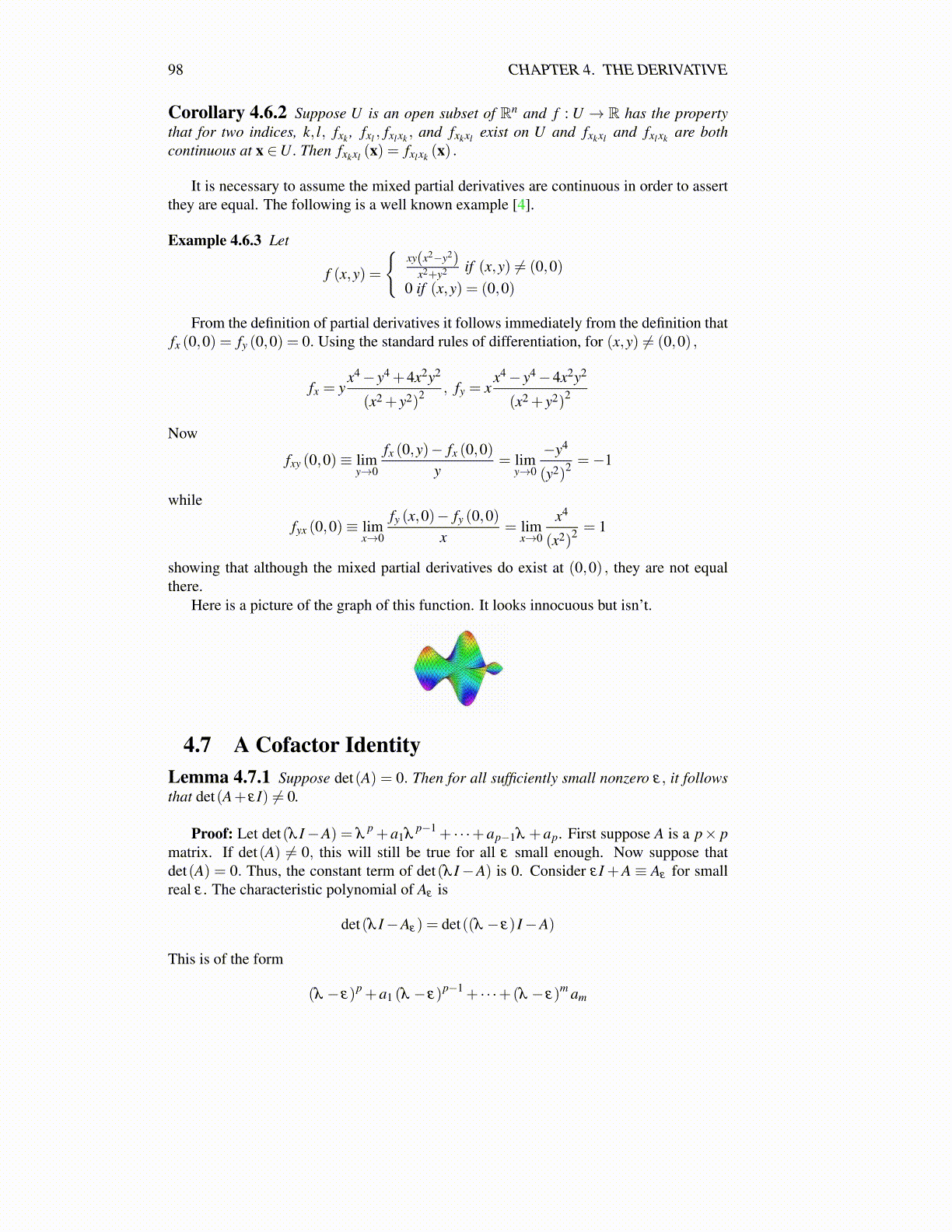
98 CHAPTER 4. THE DERIVATIVE
Corollary 4.6.2 Suppose U is an open subset of Rn and f : U → R has the propertythat for two indices, k, l, fxk , fxl , fxlxk , and fxkxl exist on U and fxkxl and fxlxk are bothcontinuous at x ∈U. Then fxkxl (x) = fxlxk (x) .
It is necessary to assume the mixed partial derivatives are continuous in order to assertthey are equal. The following is a well known example [4].
Example 4.6.3 Let
f (x,y) =
{xy(x2−y2)
x2+y2 if (x,y) ̸= (0,0)0 if (x,y) = (0,0)
From the definition of partial derivatives it follows immediately from the definition thatfx (0,0) = fy (0,0) = 0. Using the standard rules of differentiation, for (x,y) ̸= (0,0) ,
fx = yx4− y4 +4x2y2
(x2 + y2)2 , fy = xx4− y4−4x2y2
(x2 + y2)2
Now
fxy (0,0)≡ limy→0
fx (0,y)− fx (0,0)y
= limy→0
−y4
(y2)2 =−1
while
fyx (0,0)≡ limx→0
fy (x,0)− fy (0,0)x
= limx→0
x4
(x2)2 = 1
showing that although the mixed partial derivatives do exist at (0,0) , they are not equalthere.
Here is a picture of the graph of this function. It looks innocuous but isn’t.
4.7 A Cofactor IdentityLemma 4.7.1 Suppose det(A) = 0. Then for all sufficiently small nonzero ε, it followsthat det(A+ εI) ̸= 0.
Proof: Let det(λ I−A) = λp +a1λ
p−1 + · · ·+ap−1λ +ap. First suppose A is a p× pmatrix. If det(A) ̸= 0, this will still be true for all ε small enough. Now suppose thatdet(A) = 0. Thus, the constant term of det(λ I−A) is 0. Consider εI +A ≡ Aε for smallreal ε . The characteristic polynomial of Aε is
det(λ I−Aε) = det((λ − ε) I−A)
This is of the form
(λ − ε)p +a1 (λ − ε)p−1 + · · ·+(λ − ε)m am